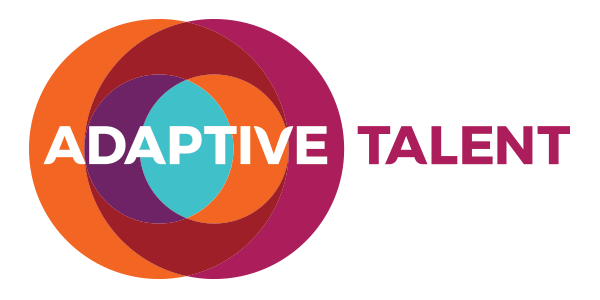Here’s the section I found really interesting:
Recruitment: When you’re looking for a job, what’s the first thing you do? Create a good résumé. What does a good résumé tell about a person? Simply the ability to write a good résumé. The résumé doesn’t reflect skill, potential, or aptitude. Indian companies figured this out long ago. So they started putting applicants through batteries of psychometric tests and rigorous interviews. They hire for general ability and aptitude, rather than specialized domain and technical skills. Indian companies also learned to cast a wider net when looking for people with potential. Instead of hiring only from elite engineering colleges, technology companies such as Infosys, HCL, and TCS recruit from second- and third-tier colleges all across the country, and also in arts and science schools. India’s largest call-center operator, Genpact, has set up branded storefronts in 19 cities, where applicants can learn about the company and apply for a job; no resume required.
New-employee training: Companies in India assume that new recruits will have to be trained practically from scratch. So most large companies have built dedicated learning centers, and some employ hundreds of training staff. The Infosys Global Education Centre at Mysore can train 13,500 people at a time. New recruits attend a 16-week boot camp that strengthens their technical, communications, and management skills. For its arts and science recruits, TCS provides an additional three months of training. That’s right: fresh recruits get four to seven months of training before starting work.
Continuing training: Employees are typically required to participate in a wide range of education programs, including not only technical and domain training but also a wide range of soft skills and management skills encompassing training in quality processes; communication; and cultural, foreign-language and personal-effectiveness skills. It is common for companies to mandate one to four weeks of yearly training for employees. That is more than the vacation time that many Americans get. And these workers get rewarded for improving their skills: career advancement and salary increases are usually tied to the completion of training.
Companies don’t just offer online courses. They have programs of mentorship by senior executives; peer learning and knowledge sharing; and job-rotation programs. Take the example of Cadence India. Its CEO, Jaswinder Ahuja, instituted a “leaders as teachers” program under which every manager is required to spend one to two weeks teaching internal classes. Not even the CEO is exempted from this rule. Training is considered so important that the most senior executives do their part. Trainers are often the most skilled and successful employees rather than those who couldn’t cut it in customer engagements.
Managerial development: Managers are typically groomed through fast-track programs that provide management training and mentorship to highly performing employees. Preference is usually given to internal staff to fill management openings. (Yes, many companies have a policy that insiders get first dibs at management jobs). The formal training curricula include project-management, team-building, people-management, communication, coaching, and other managerial skills. On-the-job learning is provided through a variety of structured developmental experiences: job rotations, early managerial responsibilities, cross-functional projects and experiences, and intrapreneurship initiatives.
There was a time when Indian companies were so desperate to hire western-trained and -educated managers that these people would command premium salaries. Today, companies find that they can hire better talent locally. Gone are the big salaries. Returnees to India with too much management experience from abroad can have a hard time even finding a job in India.
Performance management and appraisal: Companies use ERP-like systems to manage the human-development process. Employees usually get reviewed at the end of every project. They are prescribed training if found to have weakness. (Yes, the performance review is used to guide development, rather than to protect the company from lawsuits in case they need to fire you).
Mechanisms such as 360-degree reviews (wherein you review your bosses and peers) and balanced-scorecard reviews are widely used. Managers are evaluated on a variety of non-financial measures, including employee satisfaction, attrition rates, and mentoring.
Where is the proof that these policies work?
The myth is that Indian IT companies have high turnover that is and getting worse. At a time when the Indian IT industry’s growth rates averaged a dizzying 40%, attrition rates at top Indian companies fell, or stayed in the low-teen percentages. Compare this with Silicon Valley, where a typical recruit works for a new employer for three to five years at best — which translates to a 20–33% attrition rate. (Indian IT company rates dropped even further in 2009).
Most interestingly: Indian companies learned that with better education, employees became more productive so they could afford to pay higher salaries without hurting corporate profit margins.
Additionally, the Indian R&D industry has been moving into the higher realms of innovation. In the aerospace industry, Indian companies are designing the interiors of luxury jets, in-flight entertainment systems, collision-control / navigation-control systems, fuel-inverting controls, and other key components of jetliners for American and European corporations. In pharmaceuticals , Indian scientists are discovering drugs and performing clinical research for nearly all of the largest multinational drug companies. In the automotive industry, Indian engineers are helping to design bodies, dashboards, and power trains for Detroit vehicle manufacturers — and creating their own innovations, such at the Tata Nano car. In telecommunications and computer networking, Indians are developing next-generation infrastructure for tomorrow’s intelligent cities. There are over a hundred thousand people in India doing this type of advanced R&D.
, Indian scientists are discovering drugs and performing clinical research for nearly all of the largest multinational drug companies. In the automotive industry, Indian engineers are helping to design bodies, dashboards, and power trains for Detroit vehicle manufacturers — and creating their own innovations, such at the Tata Nano car. In telecommunications and computer networking, Indians are developing next-generation infrastructure for tomorrow’s intelligent cities. There are over a hundred thousand people in India doing this type of advanced R&D.
The Indian experience highlights what can be achieved by investing in upgrading the skills of the workforce. If workforce training can take the output of an education system as weak as India’s and turn its graduates into world-class engineers and scientists, imagine what could be done with a worker base that has received amongst the best education in the world, as is the case in the United States.
U.S. companies have long played the guru, developing and disseminating many widely adopted management and workforce practices. The time has come for the guru to learn from one of its disciples: India.
Photo credit: Julian Yu
—
Adaptive Talent is a talent consultancy designed to help organizations achieve amazing results and ongoing adaptability. Founded in 2008 and based in Vancouver, Canada we offer retained search, assessments, total rewards consulting, training, leadership coaching and development programs, and culture & organizational development consulting.

